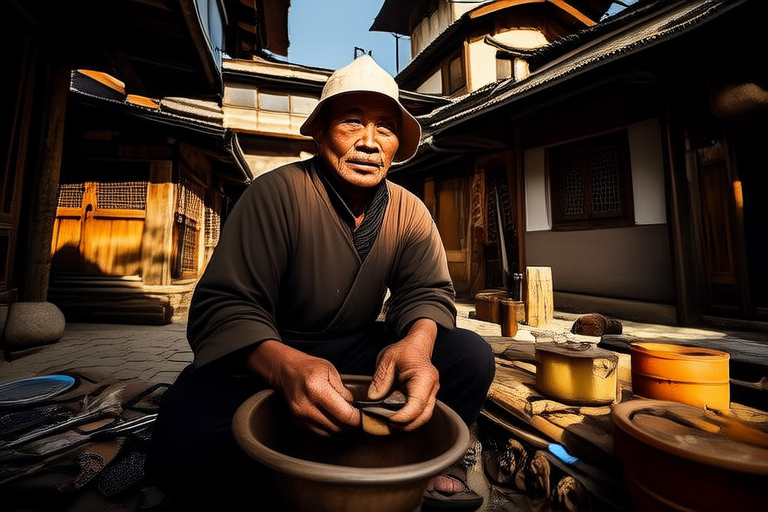Cultural Immersion: A Traveler’s Guide to Local Traditions

Cultural Immersion: A Traveler’s Guide to Local Traditions
Introduction
Cultural immersion is the practice of fully engaging with the local traditions, customs, and lifestyle of a place you visit. It goes beyond merely sightseeing; it involves experiencing the essence of a destination through its people, practices, and history. Understanding and respecting local traditions significantly enhances the travel experience by offering deeper insights and more meaningful connections.
When travelers immerse themselves in the local culture, they gain new perspectives, foster genuine connections, and enrich their personal growth. This approach counters the common pitfalls of superficial tourism, where visitors may miss out on the true character of a place. By embracing cultural immersion, travelers can create lasting memories and contribute positively to the communities they visit.
Why Cultural Immersion Matters
Engaging with local traditions offers numerous benefits. Firstly, it broadens one’s worldview by exposing travelers to diverse perspectives, values, and ways of life. This exposure fosters empathy and understanding, which are crucial in our increasingly interconnected world. Secondly, cultural immersion allows travelers to form meaningful relationships with locals, creating bonds that go beyond mere interactions.
Superficial tourism often involves visiting iconic landmarks without delving into the underlying culture. This can lead to missed opportunities for authentic experiences and a superficial understanding of the destination. By contrast, cultural immersion ensures that travelers appreciate the richness and complexity of local traditions, thereby enhancing their overall travel experience.
How to Approach Local Traditions
To respectfully engage with local customs, travelers should familiarize themselves with basic guidelines before their trip. Dress codes, etiquette, and communication norms vary widely across cultures. For instance, in many Asian countries, removing shoes before entering someone’s home is considered polite. In contrast, in some European countries, it might be customary to keep shoes on indoors.
Participating in local festivals, ceremonies, and daily activities provides invaluable opportunities for cultural immersion. These events offer a window into the soul of a community, showcasing its unique identity and shared values. Whether it’s attending a traditional dance performance, joining a religious ceremony, or simply observing daily routines, travelers can gain profound insights into the lives of locals.
Understanding Local Etiquette
Greetings, dining customs, and gift-giving practices are essential aspects of local etiquette. In Japan, bowing is a common greeting, and the depth of the bow conveys respect. In contrast, in many Western cultures, a handshake is more typical. Dining customs also differ; in some cultures, it’s impolite to eat with your hands, while in others, it’s customary to use both hands when receiving gifts.
Examples from various cultures illustrate these points. In India, it’s customary to remove your shoes before entering a home, and it’s polite to use your right hand for eating and giving. In many Middle Eastern countries, guests are expected to remove their shoes at the entrance, and it’s considered rude to leave food uneaten. In Latin America, it’s common to greet friends with a kiss on each cheek, and it’s customary to bring a small gift when invited to someone’s home.
Learning Through Food and Drink
Food and drink are integral to local culture and traditions. They reflect the history, geography, and social fabric of a place. Exploring regional cuisine, cooking techniques, and the significance behind certain dishes can provide a deeper understanding of a destination. For example, sushi in Japan is not just a meal but a reflection of the country’s rich fishing heritage and meticulous culinary tradition.
Travelers can learn about regional cuisine by visiting local markets, participating in cooking classes, or dining at family-owned restaurants. These experiences offer a hands-on approach to learning about the flavors, ingredients, and preparation methods that define a region’s culinary identity. Additionally, understanding the cultural significance behind certain dishes can add layers of meaning to the dining experience.
Engaging with Art and Craftsmanship
Art and craftsmanship play a significant role in local traditions, often serving as a means of expression and storytelling. From intricate textiles in Morocco to delicate pottery in Mexico, these crafts are deeply rooted in the cultural heritage of a place. Engaging with artisans can provide travelers with a unique opportunity to witness firsthand the skills and dedication required to create these masterpieces.
Opportunities abound for travelers to interact with artisans, attend workshops, or purchase authentic crafts. Visiting local markets, craft fairs, and studios allows travelers to meet artisans, learn about their techniques, and even participate in hands-on activities. Supporting these artisans not only enriches the traveler’s experience but also contributes to the preservation of traditional crafts and the livelihoods of skilled craftsmen.
Responsible Tourism
Responsible tourism involves traveling in a way that respects local environments, cultures, and communities. Ethical considerations include minimizing environmental impact, supporting local businesses, and engaging with local traditions in a respectful manner. By choosing sustainable practices and community-based initiatives, travelers can ensure that their presence has a positive impact on the places they visit.
Supporting sustainable tourism practices helps preserve natural resources, protects cultural heritage, and promotes economic development within local communities. Travelers can contribute by staying in eco-friendly accommodations, opting for locally owned tour operators, and purchasing products made by local artisans. These actions help ensure that tourism benefits the host community rather than exploiting it.
Conclusion
Cultural immersion offers travelers a profound and enriching experience, allowing them to connect deeply with the local traditions and lifestyles of a place. By approaching each destination with an open mind and a willingness to learn, travelers can gain new perspectives, foster meaningful connections, and enrich their personal growth.
Remember, the key to successful cultural immersion lies in respect, curiosity, and engagement. Whether you’re exploring the vibrant markets of Marrakech, the serene temples of Kyoto, or the bustling streets of Rio de Janeiro, embrace the opportunity to learn and grow. Let your travels be a journey of discovery, where every interaction and experience deepens your understanding and appreciation of the world’s rich cultural tapestry.